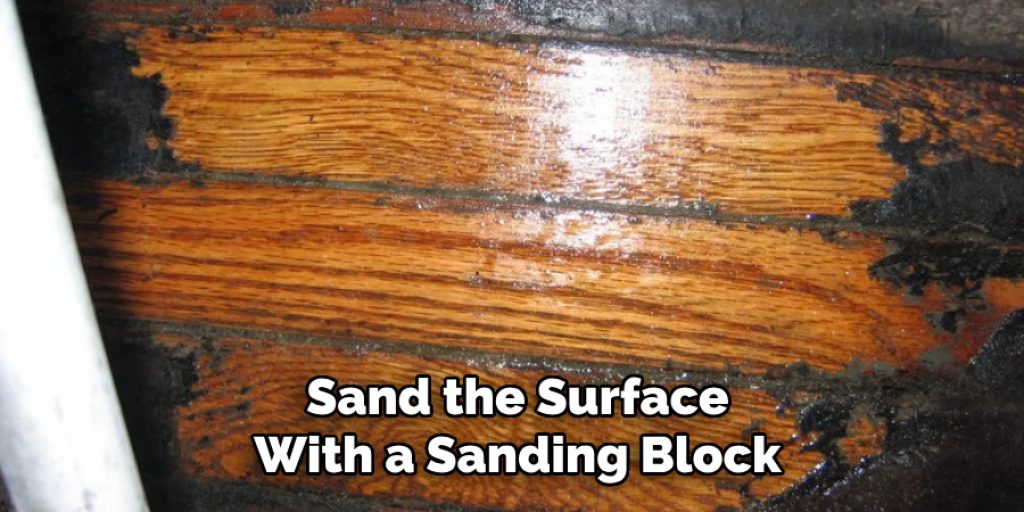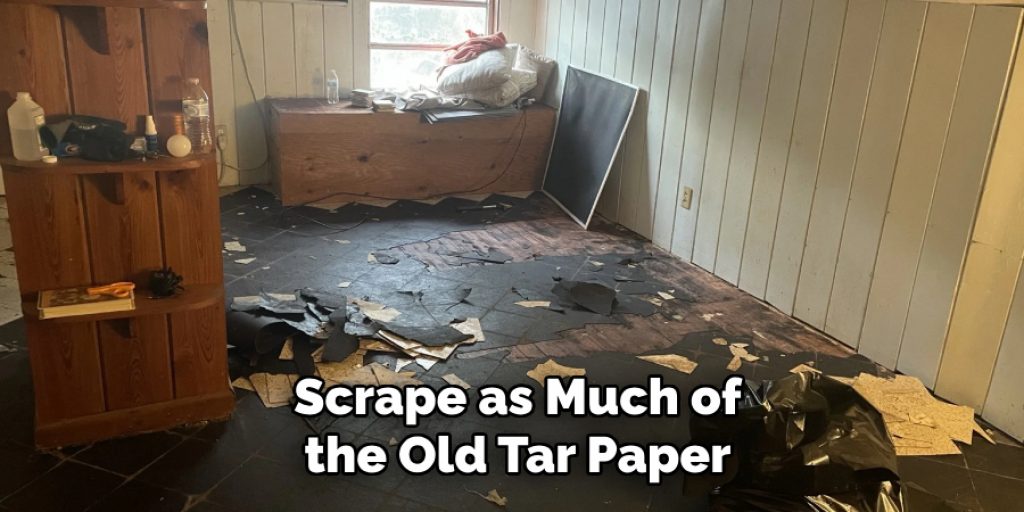How to Remove Tar Paper From Wood Floors
Tar paper is a common type of roofing material that was used in the 20th century. It’s made from bitumen and petroleum and is often applied with adhesive to create a waterproof membrane. Tar paper can be found on roofs, under asphalt shingles, and sometimes as insulation in walls. Another layer of shingles or tiles usually covers tar paper to protect against wind and rainwear, and tear.
In order to remove tar paper from wood floors, you need to first soak it for around 20 minutes with water mixed with dish soap or degreaser. Next, scrub this mixture into the tar paper and then cover it with a thick layer of plastic wrap before removing the tar paper. Tarpaper removal can be tricky, but if you follow these steps on how to remove tar paper from wood floors carefully, your floor should look as good as new soon after!

What is Tar Paper?
Tar Paper is a type of building material used to create smooth, watertight roofs and exterior walls. It was typically made from asphalt or coal tar mixed with mineral fillers such as limestone or sand. While it provided effective weatherproofing for the outer structure of homes and buildings, it also left behind a thick, black residue when it was removed. In many cases, tar paper can’t be wiped away with a dry rag or scraper.
It can be quite a challenge to remove tar paper entirely, as it often requires harsh chemicals and several rounds of cleaning. To avoid exposure to chemicals and having to scrape and scrub for extended periods, homeowners should check the original building plans to see if a different type of waterproofing material was used in construction. Alternatives to tar paper include materials such as asphalt felt, house siding, or bituminous waterproofing.
7 Ways To Remove Tar Paper:
1. Scrape off as much of the tar paper or asphalt glue as possible with a large, flat putty knife (the type that comes in a heavier metal sleeve).
2. Thin caustic chemicals like oven cleaner and paint remover can dissolve tar paper. They take time to work but are very effective.
3. Tar paper or asphalt glue can be loosened with mineral spirits or naphtha (lighter fluid).
4. Tar paper or asphalt glue can be soaked up using kitty litter (especially the clay-type).
5. The adhesive on tar paper may also be softened using a heat gun, hairdryer, or steam iron on low heat.
6. If the home has an oil heating system, use a chemical paint stripper designed for use on oil-based products like putty or asphalt glue.
7. Removing tar paper by hand can be very time consuming and difficult to do successfully, but it is possible with hard work and patience.
You Can Check It Out to Clean Plaster Dust Off Laminate Floors
How to Remove Tar Paper From Wood Floors: 8 Steps To Follow
Step 1: Scraping
Scrape as much of the old tar paper off as possible using a paint scraper. Just remember that this is a multi-step process, so don’t try to dig down too far with the paint scraper. You might gouge your wood floor or damage any boards that are already exposed.
Step 2: Water and Vinegar Solution Cleanup
Mix water and vinegar in a 1:1 ratio. Use a spray bottle to wet the surface with the mixture. Scrub the mixture into the floor with a bristle scrub brush and let sit for 5 minutes. Rinse the area with a clean spray of plain water from a garden hose. Let dry completely (overnight, if possible).
Step 3: Sanding
Sand the surface with a sanding block. If possible, start at 100 grit for a smooth finish and go to 150 or 180 before finishing at 220. Use a tack cloth to remove the dust. Remember that you want to sand the surface until it is completely smooth and no wood fibers are sticking up!

Step 4: Clear Coating
If desired, apply a clear coat of urethane or another suitable floor coating to further protect the wood from stains and liquids. Wait for the clear coat to dry completely before replacing furniture or allowing heavy foot traffic.
Step 5: Replace Flooring Boards
If your floorboards are in good shape, you can replace them easily after removing the tar paper. However, if any loose boards or damage should be repaired, ensure you take care of those problems first. If you will replace the boards, remove a few at once and use your pry bar to get underneath.
Once the board is loose from the nails that hold it in place, lift on one end and pull up with a quick jerk. It should come right out. Try to space new boards evenly as you lay them back into place.
Step 6: Carpet Glue Cleanup
Wipe the surface with a clean rag to remove excess adhesive. This may need to be repeated several times as the remaining adhesive seeps back out of any cracks and crevices in the floor that were hiding it.
Step 7: Replacing Floorboards
If all of the floorboards are shot, you can install new wood in their place. Make sure to use at least an inch’s worth of spacing between boards, if possible. It will make it easier to spot problems down the road like squeaky floors (which are usually caused by two boards.
Step 8: Finishing Touches
Your floor should now be smooth and ready for whatever you plan to throw at it (aside from chairs, of course). If you want a finished floor look, consider applying an oil finish or use a polyurethane sealer to protect it.

Conclusion:
If you want to know how to remove tar paper from wood floors, take a look at our blog post for the best way. We cover how to scrape it off with an ice scraper and then finish by using mineral spirits or paint thinner on the remaining adhesive residue. You can also use a chemical stripper to remove tar paper from wood floors.
Be sure to follow the manufacturer’s instructions for applying this product and wear gloves, goggles, respirator mask, long sleeves, pants, shoes with soles that cover your feet, and socks when using these products. The chemicals will cause serious skin burns if they come in contact with your skin or eyes, so you want to be very careful when using them.
Check out our article How to Remove Candle Wax From Wooden Floor.




